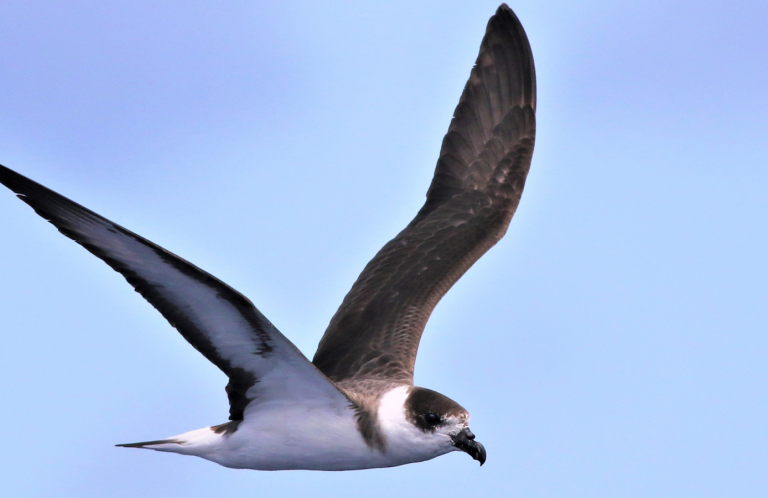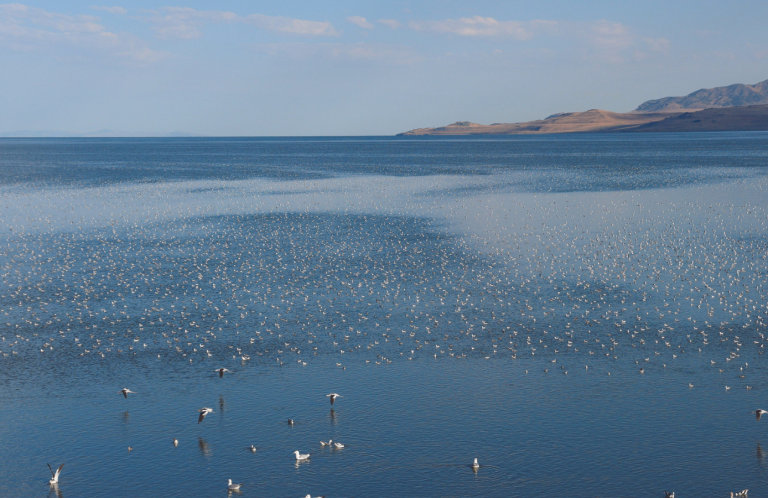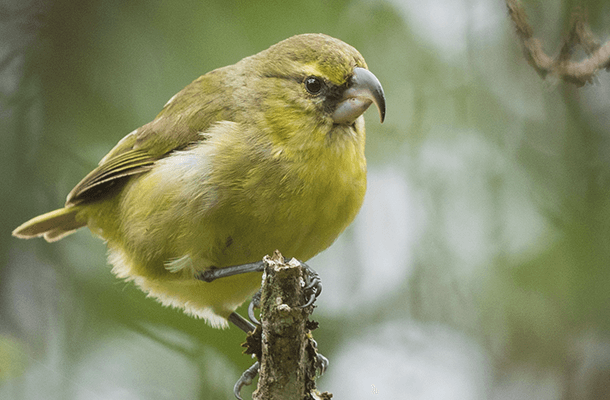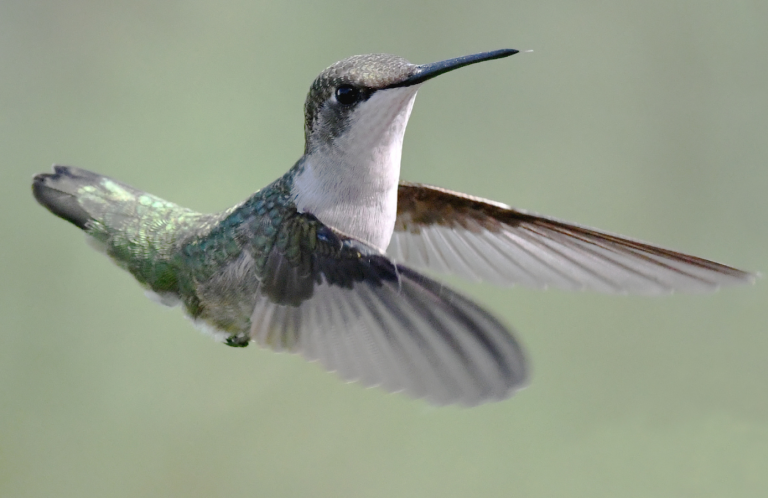Millions of Albatrosses Now Lead-free on Midway
Albatross chicks hatching on the Midway Atoll National Wildlife Refuge now have one less hazard to face on their journey to adulthood. The atoll, home to the world's largest population of Laysan Albatross, has been declared lead-free after a decade-long effort to remove the toxic substance from buildings, sand, and soil.
“This is a huge conservation win, and the USFWS and others involved should be proud of this work,” says ABC's Oceans & Islands Program Director Brad Keitt. “Albatrosses are long-lived birds. This cleanup will improve their reproductive success on Midway, helping the population to recover.”
The cleanup has been a high priority for conservationists because of the site's ecological significance. Set in the Northwestern Hawaiian Islands, Midway Atoll provides essential habitat for millions of seabirds and hosts a huge diversity of species, including tropicbirds, terns, and petrels.
The atoll's three islands are home to the world's largest nesting population of Laysan Albatross, one of three albatross species that nest on Midway. The others are Short-tailed Albatross, a species listed as Endangered in the United States, and the Black-footed Albatross.
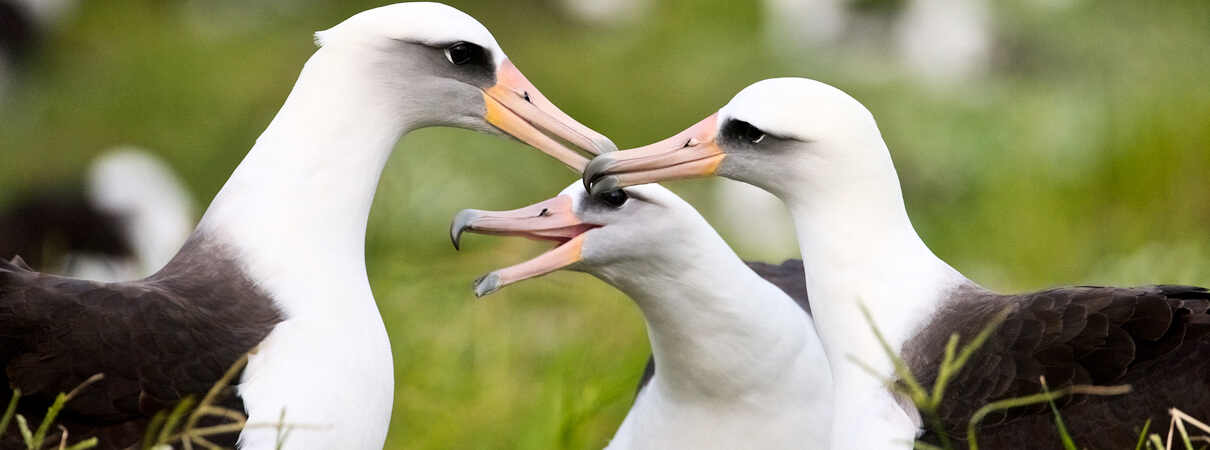
Laysan Albatross courting. Photo by Enrique Aguirre, Shutterstock
Midway's lead contamination was a byproduct of the atoll's history as an important air and submarine base during World War II. The Battle of Midway in 1942 served as a critical turning point in the war. Most service personnel had left the atoll by the 1980s, leaving it to scientists and the resident birds.
In 1996, the U.S Navy handed the Midway Islands over to the Department of the Interior for management. The property transfer included 135 buildings, many covered with lead-based paint. Over the years, deteriorating paint landed on the ground and was picked up and eaten by young birds. Why the chicks eat paint is unknown, but they tend to pick up items for their nests and may accidently ingest a few chips, which contain enough lead to poison them.
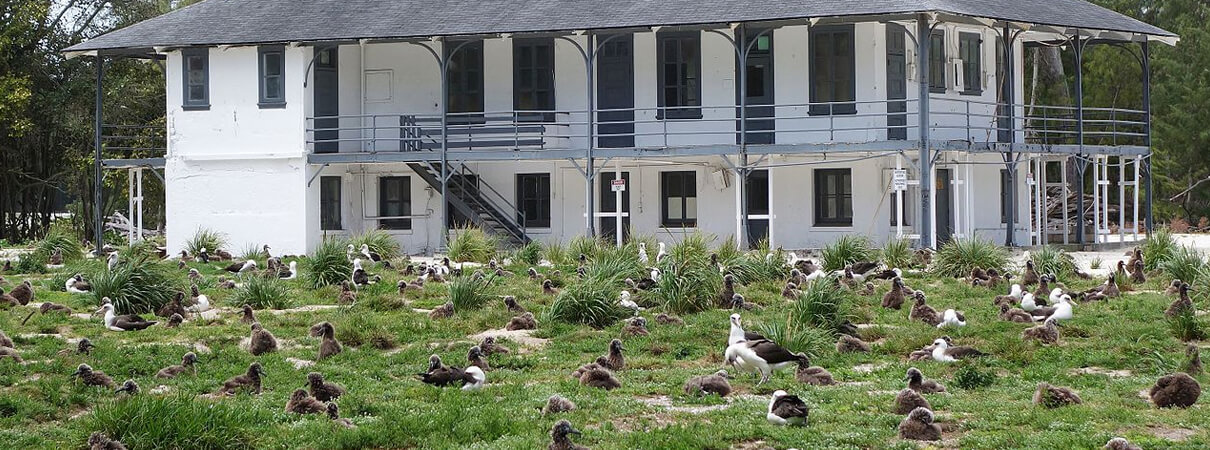
Laysan Albatross nesting around the Cable Station Mess Hall Building on Sand Island, Midway. Young birds were once exposed to lead by eating paint chips peeling from the aging building. Photo from Wikimedia Commons
Lead is highly toxic and chicks that ate paint developed "droop-wing," a paralysis that made flight impossible and doomed tens of thousands of young birds to premature deaths.
“It was devastating to see these majestic birds with their wings dragging along the ground, knowing they would never survive,” says Keitt, who visited Midway in 2000 as a field assistant for his wife's dissertation research on contaminant impacts in seabirds.
Luckily, Keitt's wife, Myra Finkelstein, had the tools needed to sample blood from these chicks and prove definitively that lead paint was the culprit. Finkelstein went on to work with ABC as a postdoctoral researcher funded by the Switzer Foundation to raise awareness of the impact of lead poisoning on Laysan Albatross and search for funding to clean up lead paint.
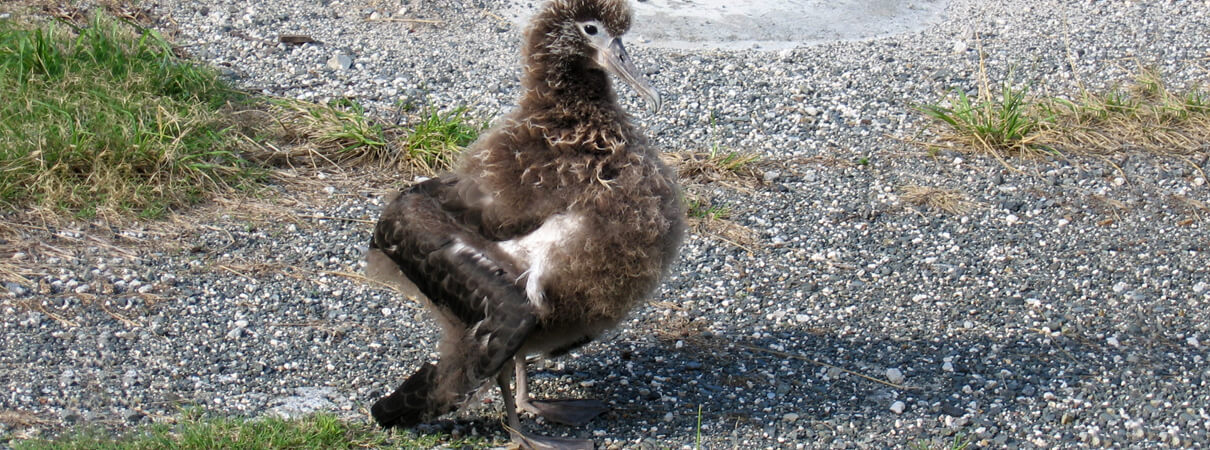
A Laysan Albatross chick with droopwing caused by lead poisoning. Photo by Myra Finkelstein
As of 2016, more than 20,000 cubic yards of lead-contaminated soil had been treated and disposed of safely. By the end of 2017, the cleanup was complete.
Meanwhile, the last of this year's newly hatched Laysan Albatross chicks will be flying out to sea this month. And for the first time in more than 50 years, none will be left behind on Midway because of lead poisoning.





































